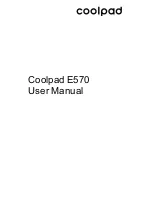
31
the Federal Communications Commissions (FCC) adopted RF
exposure guidelines with safety levels for hand-held wireless
phones. Those guidelines are consistent with the safety
standards previously set by both U.S. and international
standards bodies:
<ANSIC95.1> (1992) / <NCRP Report 86> (1986) /
<ICIMIRP> (1996)
Those standards were based on comprehensive and periodic
evaluations of the relevant scientific literature. For example,
over 120 scientists, engineers, and physicians from universities,
government health agencies, and industry reviewed the
available body of research to develop the ANSI Standard
(C95.1). Nevertheless, we recommend that you use a
hands-free kit with your phone (such as an earpiece or headset)
to avoid potential exposure to RF energy. The design of your
phone complies with the FCC guidelines (and those
standards).
Use only the supplied or an approved replacement antenna.
Unauthorized antennas, modifications, or attachments could
damage the phone and may violate FCC regulations.
NORMAL POSITION:
Hold the phone as you would any other telephone with the
antenna pointed up and over your shoulder.
RF Exposure Information:
FCC RF Exposure requirements: The highest SAR value
reported under this standard during product certification
for use next to the body with the minimum separation
distance of 1.5cm is 0.483W/kg, next to the head is
0.699W/kg. This transmitter must not be collocated or
operating in conjunction with any other antenna or
transmitter.
This device complies with part 15 of the FCC rules.
Operation is subject to the following two conditions:
(1) this device may not cause harmful interference, and


































